The North Aegean Islands, scattered across Greece’s northern waters, have a vibe that’s nothing like the packed beaches of Santorini or Mykonos. When I wandered through these lesser-known gems, I stumbled on islands where ancient mysteries still echo through Byzantine ruins.
Mastic trees drip their liquid gold here, and ouzo flows almost as freely as the stories locals swap in sunlit village squares.
These rugged islands blend unspoiled natural beauty with authentic Greek culture. It’s an experience that feels both timeless and, honestly, a little bit like you’ve stumbled on a secret.
From Lesbos’s petrified forests to Samothrace’s sacred sites, every island has its own personality, quirks, and hidden corners.
My journey wound through volcanic beaches, rolling vineyards, and medieval villages. Traditional crafts still thrive here.
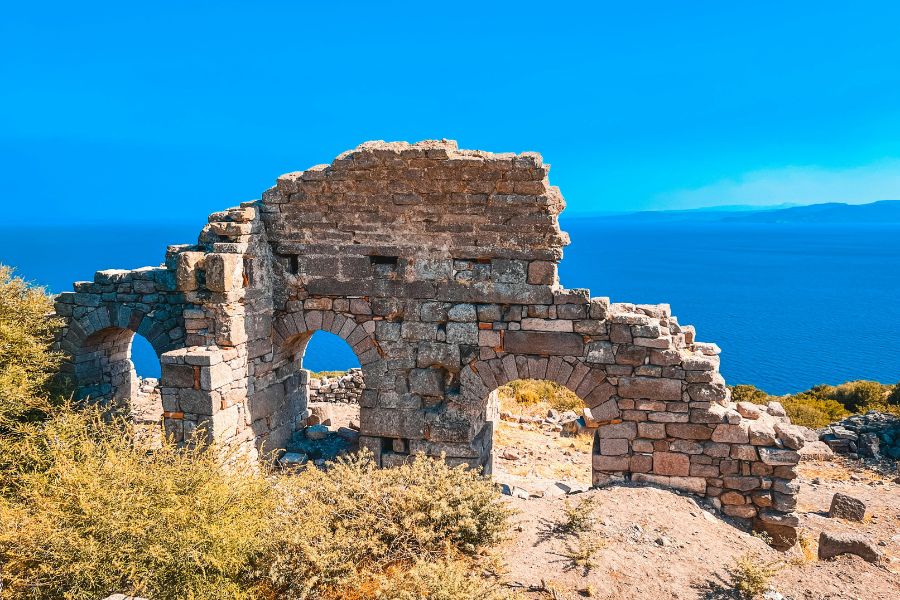
I ducked into tavernas where recipes get handed down like family treasures. What really struck me? These islands keep their authentic spirit alive, yet they offer all sorts of adventures—from hiking ancient footpaths to tasting local products you just won’t find anywhere else in Greece.
The Allure of the North Aegean Islands
The North Aegean Islands let you escape the crowds and chaos of Greece’s biggest tourist magnets. Here, you’ll find pristine landscapes, deep history, and a kind of island culture that feels real, not staged.
Honestly, these scattered islands offer something you just can’t get in the more famous chains.
Distinctive Features and Unspoiled Nature
The North Aegean stands apart from the mass tourism that’s taken over so much of the Greek islands. I found villages where strict rules keep high-rise hotels out and protect the old stone houses.
Lesvos blew me away with its 11 million olive trees. That’s 122 trees for every person living there.
The whole island earned Geopark status because of its Petrified Forest, where ancient trees literally turned to stone.
Each island’s landscape feels unique:
- Lemnos gives you more than 100 beaches, plus sand dunes and a lake
- Chios is the only place on earth where mastic gum comes from tree resin
- Ikaria feels almost untouched by tourism
- Samos mixes mountains with ancient feats of engineering
The beaches? They couldn’t be more different. I walked on white sand, red sand, pebbly stretches, and rocky coves—all on the same island chain.
Brief History and Cultural Heritage
These islands shaped Mediterranean trade as far back as 3000 BC. Their spot between East and West made them vital shipping centers, long before places like Santorini hit the map.
From the 5th to 8th centuries BC, the islands thrived as cultural and trade hubs. Then came Byzantine rule.
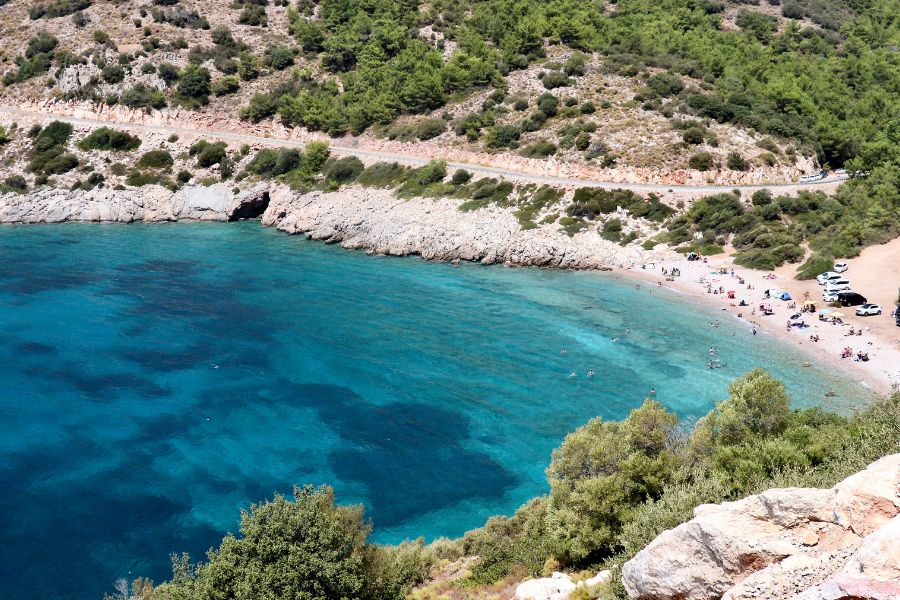
After 1453 AD, the Ottomans took over, bringing destruction and a sharp drop in population.
A quick look at the main eras:
- Ancient Era: Trade centers since 3000 BC
- Classical Period: Cultural boom (5th-8th century BC)
- Ottoman Rule: Tough times and persecution after 1453
- Modern Greece: Independence in 1912
All this history shaped the warmest, most welcoming people I’ve met in Greece. You can taste it in the food, spot it in Byzantine mosaics, and honestly just feel it in everyday life.
Comparison With Cyclades, Dodecanese, and Sporades
The North Aegean gives you something the Cyclades, Dodecanese, and Sporades just don’t: authentic Greek life, minus the tourist mobs. Santorini and Mykonos might be beautiful, but the crowds? Not for me.
Here’s what really stood out:
| Feature | North Aegean | Other Island Groups |
|---|---|---|
| Tourist crowds | Minimal | Heavy (Cyclades especially) |
| Hotel development | Low-rise, traditional | Often high-rise resorts |
| Flight access | Limited international | Multiple daily flights |
| Authenticity | Highly preserved | Often commercialized |
The Cyclades are all about dramatic cliffs and whitewashed houses. The Dodecanese lean into medieval castles and beach resorts. The Sporades? Pine forests and organized tourism.
My time in the North Aegean felt different: olive groves, fishing villages, and a pace of life where locals still outnumber visitors, even in summer.
Essential Islands to Explore
The North Aegean archipelago has five main islands that really show off Greece’s authentic side. Each one brings something different—from traditional mastic villages and ancient philosophy sites to local secrets for living a long, happy life.
Lesvos and the Emerald Island Experience
Lesvos gets called the emerald island for a reason—olive groves and wild, green landscapes are everywhere.
Mytilene, the capital, buzzes with real Greek port life but still keeps its historic charm.
Those 11 million olive trees? They make some of Greece’s finest olive oil. I loved wandering through fishing villages along the coast, watching locals stick to the same fishing routines their grandparents used.
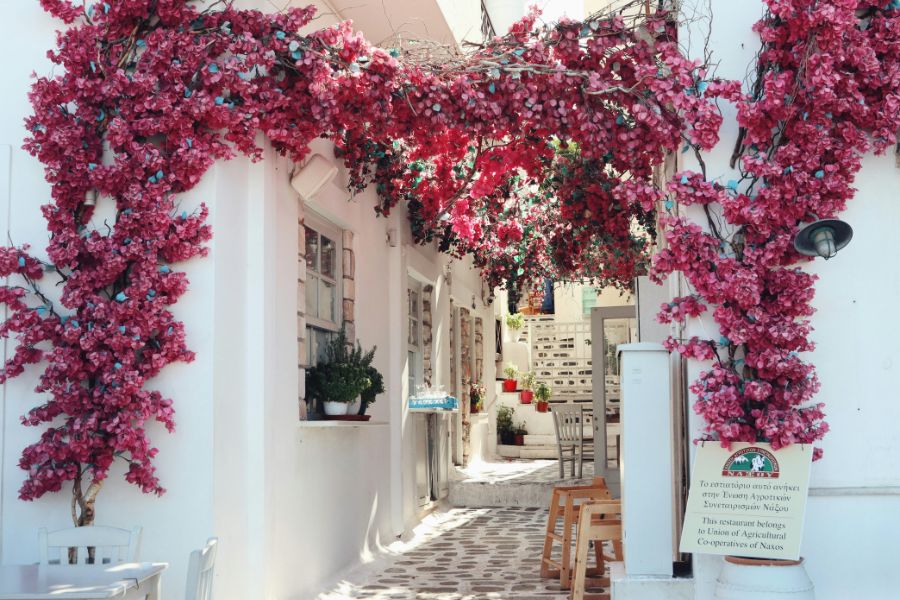
Don’t miss:
- Molivos castle perched above the sea
- The only petrified forest in Europe, over in Sigri
- Birdwatching at Skala Kalloni—world-class, honestly
Near Plomari, the World of Ouzo Museum tells the story of the island’s most famous spirit. Lesvos actually produces almost half of all ouzo in Greece.
Ancient history feels alive here. Sappho, the poet, was born on Lesvos.
The island sits on major bird migration routes, so if you love nature, it’s a paradise.
Chios and the Legendary Mastic Villages
Chios owns the world’s mastic resin production. I explored the mastichohoria villages, where people have harvested this “liquid gold” for over 2,500 years.
Villages you’ve got to see:
| Village | Notable Features |
|---|---|
| Mesta | Medieval fortress vibes |
| Pyrgi | Houses covered in wild geometric patterns |
| Olympi | Mastic fields and old traditions |
You’ll only find this resin on Chios, and that’s why UNESCO protects these villages. I watched farmers slice the mastic tree bark, collecting those precious “tears.”
Chios Town’s harbor feels lively but still shows traces of its Ottoman past. The old Kastro quarter hides ancient walls and Turkish baths.
Karfas Beach has soft golden sand and great swimming. If you’re feeling adventurous, you can hop over to Turkey for a day trip.
Samos: Birthplace of Pythagoras
Samos is where math and beauty meet. The island gave us Pythagoras (yeah, that triangle guy) and Epicurus, the philosopher.
The Temple of Hera is one of Greece’s biggest ancient sites. I wandered through the ruins, picturing the myths—Hera supposedly married Zeus here.
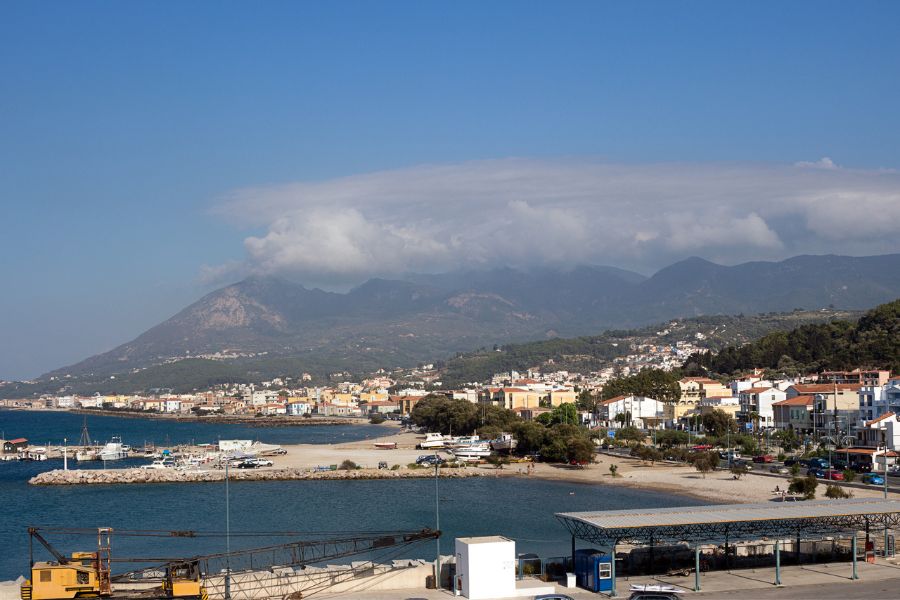
If you’re into hiking:
- Mount Kerkis towers at 1,434 meters
- Potami waterfall trails are lush and shady
- Village-to-village routes let you discover hidden corners
Samos’s Muscat wine is legendary. Vineyards cover the hills, and the sweet wine goes perfectly with seafood.
You can catch a ferry to Kusadasi, Turkey, and visit Ephesus. This close link to Asia Minor gives Samos a fascinating cultural twist.
Ikaria: The Island of Longevity
Ikaria is famous for its Blue Zone status—people here routinely live past 100. I got curious about their secrets and found it’s about food, lifestyle, and tight-knit communities.
Local food staples include:
- Fresh veggies and beans
- Wild greens and herbs
- Local red wine
- Olive oil and nuts
- Seafood that’s straight from the sea
The island’s wild terrain means you’ll want a four-wheel drive to get around. Steep roads wind down to hidden beaches like Seychelles Beach on the south coast.
Armenistis is the main base for visitors, with Livadi and Messakti beaches close by. The mountains rise up right from the sea, creating some dramatic scenery.
Villages like Manganitis keep Greek island life real. Evenings spent in a taverna, sipping wine and watching the sun set, felt like the essence of Ikarian happiness.
Unforgettable Landscapes and Natural Wonders
The North Aegean islands deliver some of the most diverse landscapes I’ve seen—petrified forests, volcanic peaks, crystal waters, secret beaches, and mountain trails.
It’s a playground for anyone who loves the outdoors.
Petrified Forests and Volcanic Terrain
Lesvos has one of the world’s most impressive petrified forests. The site stretches across the island’s west, near Sigri.
These fossilized trees are 20 million years old. Walking through the UNESCO Global Geopark felt surreal.
Giant sequoia trunks—now stone—lie strewn across the hillsides. Some reach up to 20 meters tall.
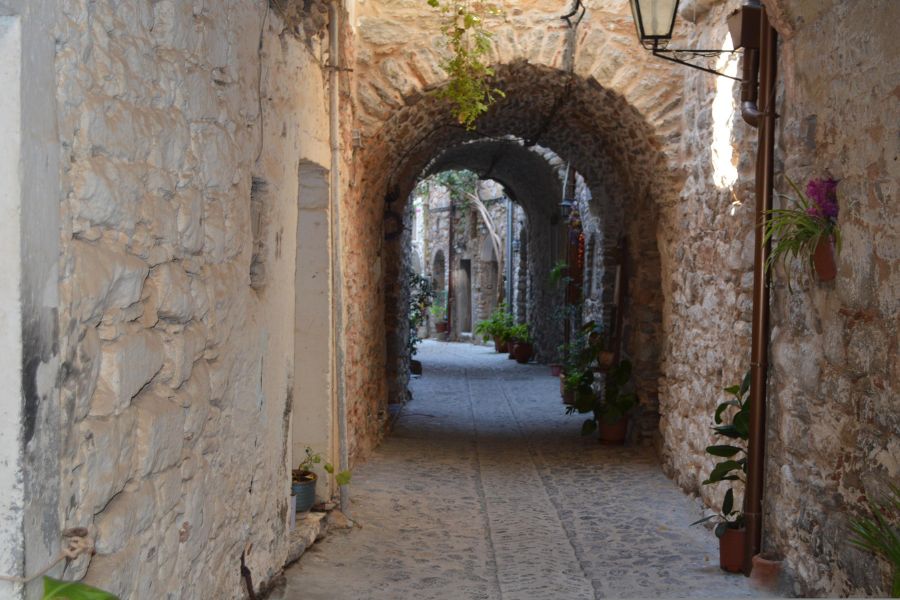
The volcanic landscape continues beyond the forest. I spotted colorful rocks and wild mineral deposits everywhere. The contrast between stone trees and the volcanic backdrop is a photographer’s dream.
Crystal-Clear Waters and Hidden Beaches
The North Aegean’s waters are shockingly clear, with every shade of blue you can imagine.
At Tsichlionta Beach on Lesvos, I could see straight to the bottom. Seychelles Beach on Ikaria stole my heart—turquoise water, tucked into rocky cliffs, and protected from the wind.
Delfinia Beach is a wildlife lover’s spot. I watched sea turtles glide through the water while I lounged on the sand. The mix of clear water and marine life makes this place unforgettable.
Waterfalls and Hot Springs
The Waterfall of Klapados on Lesvos became one of my go-to hiking spots. The falls tumble through dense forest, and the pool at the bottom is perfect for a swim.
Hot springs bubble up on several islands, thanks to underground volcanic activity. The mineral-rich waters create natural spas, with temperatures from warm to piping hot.
I found the best hot springs on the islands with the most recent volcanic action. People have come here for centuries to soak away their aches.
Mountains and Hiking Trails
Mount Saos on Samothraki is the tallest peak in the region at 1,611 meters. I tried a few hiking trails that twist through thick forests up toward the summit.
The views of the Aegean are unbeatable.
Trails here suit all levels. You’ll find gentle coastal walks and tough mountain climbs.
The terrain includes:
- Forest trails under oak and pine
- Cliffside paths with sea views
- Mountain hikes to epic lookouts
- Valley walks by streams and waterfalls
Every trail showed me something new—sea, mountains, forests—sometimes all in a single afternoon.
A Taste of the North Aegean: Local Products and Cuisine
The North Aegean islands serve up unique flavors shaped by local tradition and what grows naturally here.
From Lesvos’s famous ouzo to the rare mastic of Chios, these islands create specialties you simply won’t find anywhere else.
Mastic, Ouzo, and Olive Oil
When I first arrived on Chios, I learned it’s the only place in the world that produces real mastic. This resin comes from trees you’ll only find in southern Chios. Locals turn mastic into liqueurs, sweets, and even traditional remedies.
Lesvos caught me off guard with its ouzo scene. The town of Plomari buzzes with distilleries—each one has its own secret recipe, passed down through the family.
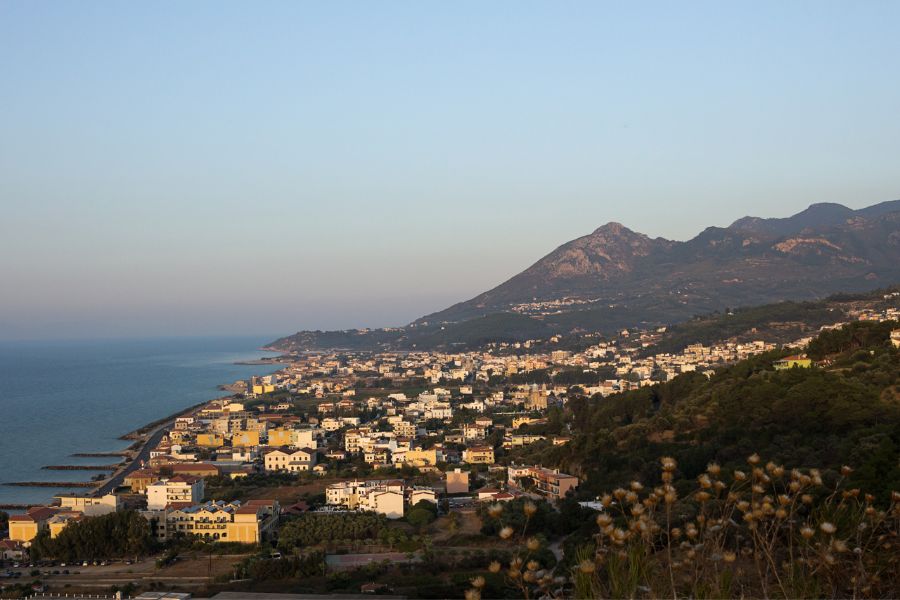
On these islands, olive oil is a big deal. I watched farmers hand-pick olives on their tiny family plots. Maybe it’s the volcanic soil or the salty breeze, but the oil here tastes richer and bolder than anywhere else I’ve tried.
Key Local Products:
- Mastic resin and liqueur from Chios
- Ouzo varieties crafted in Lesvos
- Cold-pressed olive oil from ancient groves
- Local wines with a distinct mineral kick
Traditional Tavernas and Greek Cuisine
Greek food in the North Aegean feels different from what you get on the mainland. I kept tasting influences from Asia Minor and Constantinople—spices, flavors, and cooking styles that blend Greek roots with something a little more exotic.
Village tavernas often serve dishes made from ingredients grown just down the road. Families run these places, sometimes for generations, and the recipes come straight from their grandparents.
Menus change with the seasons. Spring brings wild greens and herbs, while summer’s all about tomatoes and peppers. Once fall rolls in, grapes and olives take center stage.
I found spices like cumin, nutmeg, and cinnamon popping up more here than in other parts of Greece.
Fresh Seafood and Wine
The northern Aegean’s chilly, clear waters make for some of the best fishing around. Every morning, fishermen bring in the day’s catch. The fish here? Firm, flavorful, and just plain delicious.
Restaurants don’t mess around with complicated recipes. They grill octopus, fry sardines, and simmer fish soup—simple, honest food that lets the sea shine through.
Lesvos isn’t just about ouzo; the island’s volcanic soil turns out wines with a sharp, mineral edge. Samos, meanwhile, is famous for sweet muscat dessert wines.
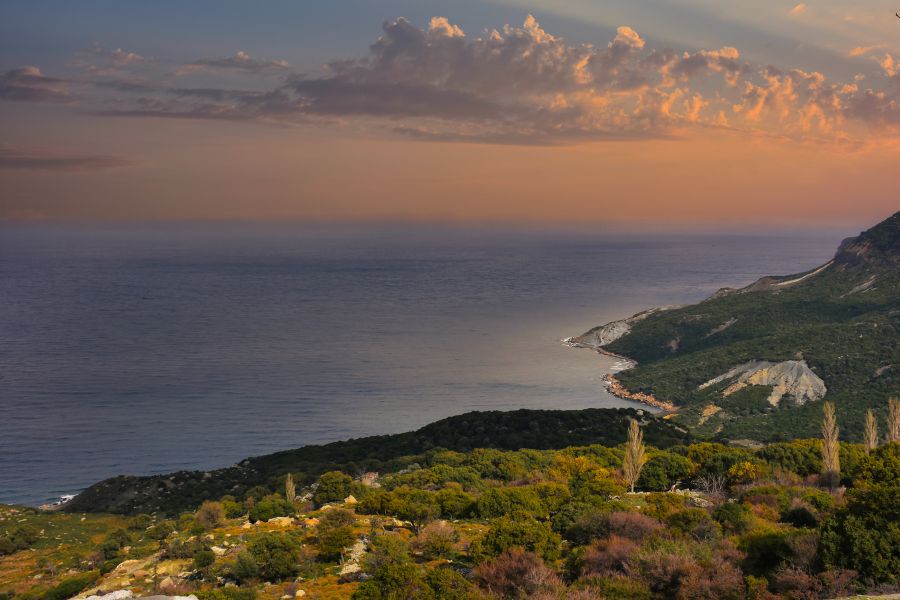
Every island seems to have its own way of pairing seafood and wine, and honestly, they nail it.
Markets and Authentic Culinary Experiences
Most island towns host weekly markets. Farmers show up with crates of vegetables, fruits, cheeses, and herbs straight from their own fields. I stumbled across ingredients I’d never find in a supermarket.
Vendors love to chat and let you sample their goods. They tell stories about how they grow things, and those conversations taught me more about island life than any guidebook ever could.
Village festivals—panigiria—bring everyone together for feasts in honor of local saints. Residents cook massive spreads of traditional dishes. These events are the real deal when it comes to experiencing island food culture.
I joined a cooking class or two, learning from local women how to roll phyllo dough, preserve olives, and whip up seasonal favorites. Their kitchen tips stick with me even now.
Ancient Sites, Myths, and Cultural Treasures
The North Aegean islands hide some of Greece’s most intriguing archaeological finds. I wandered through ancient temples built for Greek gods and climbed up medieval Byzantine fortresses. Myths seem to echo everywhere—at every sanctuary, in every festival, and even in the way people celebrate old customs.
Temples and Ancient Ruins
On Samothrace, I explored the Sanctuary of the Great Gods. Mysterious initiation rites happened here ages ago. The site feels as powerful as Delphi and draws archaeologists from all over.
Lesbos’s Archaeological Area Klopedi transported me back to ancient Greece. Important temples to Apollo once stood here, though now you’ll mostly find foundations and scattered stones.
Thasos wowed me with its ancient ruins. I walked through:
- The Temple of Artemis
- An ancient agora with marble columns
- A Roman theater that looks out over the sea
- City walls dating back to the 7th century BC

On Lesbos, the Temple of Aphrodite doesn’t have much left, but standing where Greeks once worshipped the goddess of love gave me chills.
Museums and Byzantine Castles
The Castle of Mytilene towers over the harbor from a hilltop. Built in the Middle Ages, this fortress kept Lesbos safe from pirates. I climbed the stone walls and ducked into chambers where medieval soldiers once lived.
Molivos Castle perches on Lesbos’s highest hill. The thick Byzantine walls and the view across the island are unforgettable.
Museums across the North Aegean display some truly unique finds. I spotted:
- Ancient coins and pottery
- Byzantine icons
- Traditional fishing gear
- Weapons from different eras
The Roman Aqueduct on Lesbos blew me away. Built in the 2nd or 3rd century AD, it’s a feat of engineering. I followed the old water channels that once supplied whole communities.
Mythology and Legends
Every island has its own legends. Samothrace ties into the story of Odysseus, while Lemnos pops up in tales of Hephaestus, the god of fire and metalworking.
Old fishermen still talk about sirens calling sailors from rocky shores. I can’t say I heard any myself, but the stories stick with you.
The Aegean Sea plays a starring role in countless Greek myths. Jason and the Argonauts sailed these waters searching for the Golden Fleece.
People once believed these islands housed divine spirits. I visited sacred caves and springs where folks left offerings for the gods.
Traditional Villages and Festivals
Mountain villages here still preserve old ways of life. Agiasos on Lesbos stands out with its winding cobblestone streets and medieval feel.
Festivals bring everyone together—some celebrate Christian saints, others keep ancient Greek customs alive. You’ll find:
- Carnival parties with masks and dancing
- Religious processions
- Harvest festivals packed with local food
- Music festivals featuring traditional instruments
Village artisans keep old crafts going. I watched potters and weavers use techniques their grandparents taught them.
The food here tells its own story, blending Greek, Turkish, and Byzantine flavors in every bite.
Getting There and Around: Practical Guide to Planning Your Journey
Traveling the North Aegean takes some planning. Ferry routes are limited and schedules change with the seasons. Picking the right base and timing your trip helps you dodge crowds and see authentic island life.
Travel Logistics and Island Hopping
Getting to these islands usually means connecting through mainland Greece. Thessaloniki acts as the main gateway for northern spots like Thassos and Samothraki.
Most ferries leave from Piraeus, near Athens. In summer, booking tickets ahead is a good idea. The ride to Chios takes about 7-8 hours on a standard ferry.
Ferry Routes from Piraeus:
- Chios: Daily ferries (7-8 hours)
- Lesvos: Daily (10-12 hours)
- Samos: Multiple options (8-10 hours)
- Lemnos: 3-4 times a week (12 hours)
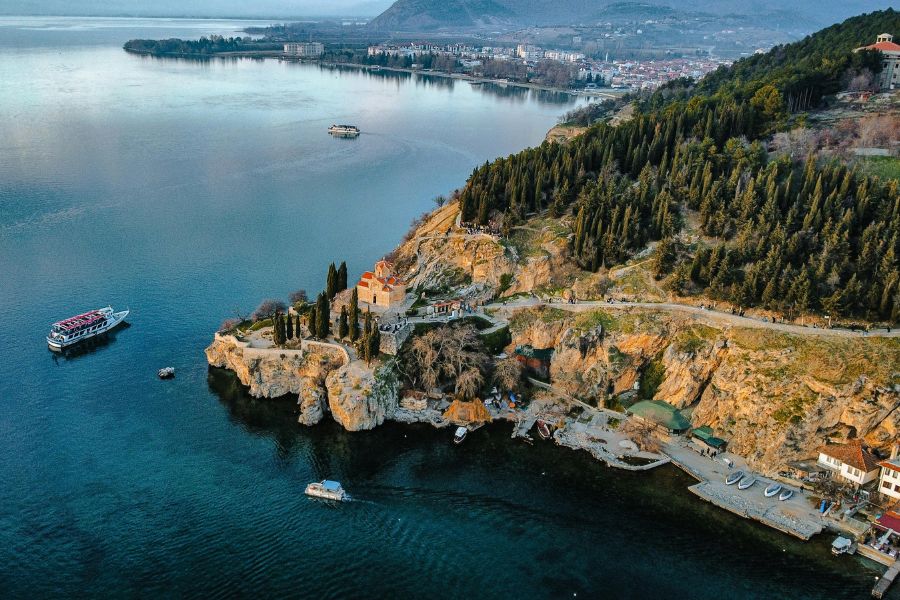
Island hopping here isn’t as easy as in the Cyclades, so plan ahead. Connections between North Aegean islands don’t run as often as those to Kos or the Dodecanese.
Flying is quicker for the big islands. Chios, Lesvos, and Samos all have airports with flights from Athens. When I was short on time, I flew, but ferries really give you that full island vibe.
Where to Stay: Villages and Main Towns
I always lean toward traditional villages instead of port towns. The atmosphere feels more genuine, and you get a taste of real island life.
On Lemnos, Myrina makes a great base. Its Venetian castle and waterfront restaurants set the scene, plus you’ll find good ferry links and car rentals. I liked the family-run guesthouses near the harbor—so much more personal.
In Chios, the mastic-producing southern villages are perfect for a stay. Pyrgi and Mesta offer medieval architecture and strong local culture. I stayed in a restored stone house; it felt like living inside a piece of history.
Accommodation Types:
- Guesthouses in village centers
- Restored stone houses with kitchenettes
- Small hotels in port towns
- Rural villas for longer stays
Book early if you’re coming in summer. Many places close for the winter. Sometimes, calling the property directly got me a better deal than booking online.
Tips for Avoiding Mass Tourism
The North Aegean doesn’t see the crowds you’ll find on Skopelos or Euboea. Still, when and where you go matters.
Shoulder seasons—May and September—offer warm weather without the chaos. I found October great for hiking and exploring ruins.
Pick smaller villages over main ports. Mytilene on Lesvos has everything you need, but Molyvos feels more authentic. The best tavernas often hide in villages with just a few hundred residents.
Crowd-Avoiding Strategies:
- Travel on weekdays
- Stay away from ferry ports
- Eat at family-run tavernas
- Visit archaeological sites early or late
Local festivals are a goldmine for real cultural experiences. I stumbled into a few village celebrations that you won’t find in any guidebook.
Frequently Asked Questions
After exploring these islands, I’ve collected answers to the questions travelers ask me most. If you’re curious about must-see islands, local food, or authentic experiences, you’re in the right place.
What are the must-visit islands in the North Aegean for a blend of history and natural beauty?
Start with Chios for its medieval mastic villages and clear waters. Pyrgi’s geometric houses are a photographer’s dream.
Samos combines ancient ruins with lush green hills. The UNESCO-listed Pythagoreion is an engineering marvel.
Lesbos offers the Petrified Forest and the charming harbor town of Molivos. Olive groves roll for miles over the hills.
Samothrace has a mystical vibe, thanks to the Sanctuary of the Great Gods. Its mountains hide waterfalls and wild hiking trails.
Can you recommend traditional foods to try while exploring the North Aegean islands?
Seafood tops my list—grilled octopus and crispy calamari are everywhere. The islands’ closeness to Turkey means the fish is always fresh.
Moussaka here gets a twist with local cheeses. Each island has its own version.
Don’t miss spanakopita made from wild greens you won’t find anywhere else. Local bakeries stick to family recipes.
Try the cheeses with local wines. Samos Muscat is famous for its sweet, complex flavor.
How can travelers best experience the production of mastic and ouzo in the North Aegean?
Head to Chios during mastic harvest season—July through October—for a real hands-on look. Families still collect resin the old-fashioned way.
In southern Chios, the mastic villages run tours showing you every step, from tree to bottle.
Lesbos distilleries welcome visitors, offering ouzo tastings paired with classic meze. Book tours ahead during busy months. Some places even let you try distilling yourself.
What are the top ancient historical sites to visit in the North Aegean region?
The Sanctuary of the Great Gods on Samothrace is one of Greece’s most mysterious sites. Ancient ceremonies happened here for over a thousand years.
Pythagoreion on Samos showcases the Eupalinos tunnel, a 6th-century BCE aqueduct that still amazes engineers.
The Ancient Theatre of Mytilene on Lesbos seats 15,000 people. Its acoustics are still perfect after two millennia.
Poliochni on Lemnos is older than Troy and gives you a glimpse into Bronze Age city life.
What advice do you have for respectfully engaging with local cultures in the North Aegean?
Learn a few Greek greetings and thank-yous. Even a little effort goes a long way with locals.
Dress modestly in churches and monasteries—cover your shoulders and knees.
Join local festivals whenever you can. They’re the best way to connect with communities.
Support family-run restaurants and shops. It helps keep traditional crafts and island economies alive.
What are the tips for finding off-the-beaten-path spots in the North Aegean islands?
Honestly, renting a car or scooter makes all the difference. You can zip out to those remote beaches and tucked-away mountain villages that buses just don’t reach.
If you pop into a tiny café, try chatting with the locals. More often than not, they’ll tip you off about their favorite swimming spots—sometimes these secret beaches don’t even show up in guidebooks.
I love wandering along hiking trails that link up old, abandoned villages or ancient ruins. You stumble onto wild viewpoints and pieces of history you’d never expect.
Thinking about timing? I’d suggest visiting in May or September. The crowds thin out, the weather’s still gorgeous, and you get a more genuine feel for the islands.

